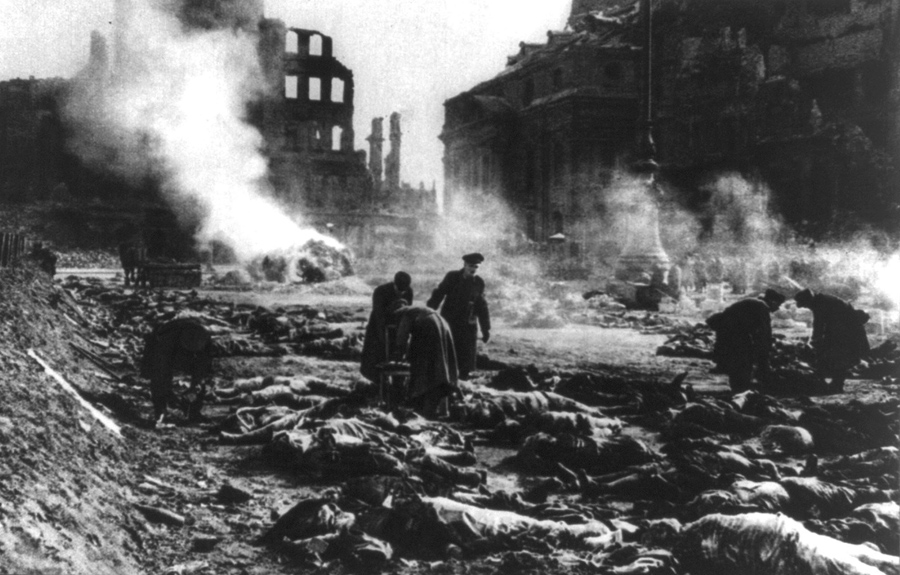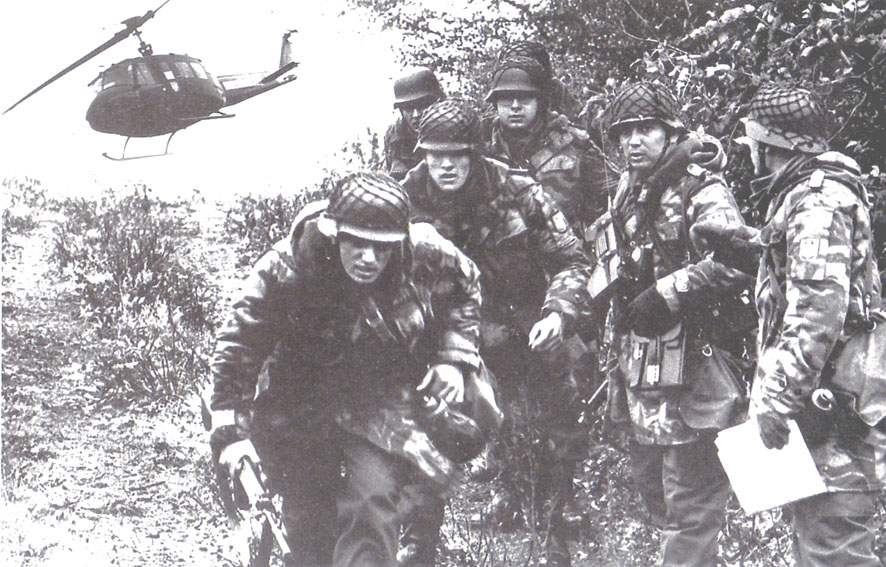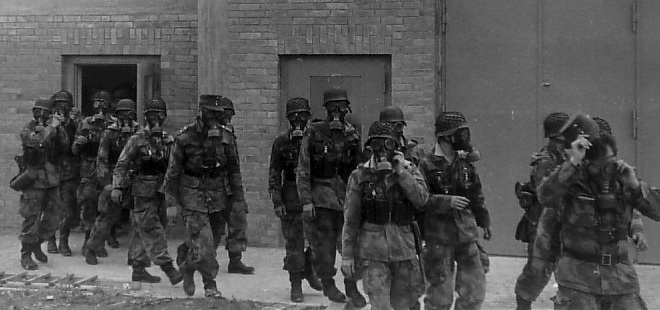You are using an out of date browser. It may not display this or other websites correctly.
You should upgrade or use an alternative browser.
You should upgrade or use an alternative browser.
Photos from Featherston's Confederacy/ TL-191
- Thread starter Alternatehistoryguy47
- Start date
-
- Tags
- the rising sun
is Alaska still part of Russia or has it been taken by the United States by now?Is this based after After the End?
Here's another continued work I did about a Post-1944 Britain.
Source: https://www.alternatehistory.com/fo...federacy-tl-191.185493/page-148#post-17623675
Below are pictures of a time when Scotland and Wales were independent and the current flag of the U.K.



Source: https://www.alternatehistory.com/fo...federacy-tl-191.185493/page-148#post-17623675
The United States had long disagreed with Germany over the break-up of the United Kingdom. Scotland may have enjoyed their independence, but both it and Wales were still economically dependent on the Mitteleuropäisch Union (M.E.U.). In Wales, there was a lot of nostalgia for the then-British Crown. Even in England, the English King still uses the title of "Prince of Wales". During the world-wide revolutions of 1989, the Americans supported calls for a plebiscite to occur and determine if they wanted to become Britons.
That same year, Scotland and Wales voted to join the Kingdom of England and re-form the United Kingdom of Great Britain. Only Ireland refused to be part of the plebiscite.Germany hated the idea and it had to deal with other nation's increasing skepticism of belonging to the M.E.U.
Below are pictures of a time when Scotland and Wales were independent and the current flag of the U.K.



The USS Missouri and the Union Navy in Tampa Bay on the day following the Confederate Surrender, circa 1944. Note the US Navy Aircraft are making a massive fly past as part of the celebrations.
Last edited:

Picture of John F. Kennedy, a younger brother of Joseph P. Kennedy, Jr., who died during the Battle of the North Atlantic on August 2nd, 1943.
The USS Missouri and the Union Navy in Tampa Bay on the day following the Confederate Surrender, circa 1944.
Nice view.
In-universe, why so many airplanes and where are they going?

The Devils Toadstool, an iconic photograph snapped in rural Pennsylvania of the ash cloud rising over West Philadelphia after the Confederates States superbomb attack on the US capital
An American version of the Black Shirts

Flag of the Silver Legion of America (Silvershirts)

Picture of a group of Silvershirts, ca. 1930's
Propaganda poster of a Silvershirt movie

Wanted poster for the founder of the Silvershirts after the USA and CSA went to war
The Black Shirts [incorrectly called "Silvershirts"] had an American version of the Ultranationalist British Union. This party argued for renewed diplomatic relations with Britain, France, Russia, and the Confederacy. The party and its founder were banned in 1941 when the Second Great War occurred.

Flag of the Silver Legion of America (Silvershirts)

Picture of a group of Silvershirts, ca. 1930's

Propaganda poster of a Silvershirt movie
Wanted poster for the founder of the Silvershirts after the USA and CSA went to war
The Black Shirts [incorrectly called "Silvershirts"] had an American version of the Ultranationalist British Union. This party argued for renewed diplomatic relations with Britain, France, Russia, and the Confederacy. The party and its founder were banned in 1941 when the Second Great War occurred.
Last edited:
(My own take of alternative history within TL-191, this time around the Bull Moose.)
President Theodore Roosevelt. (1913-1924.) Roosevelt, famous for courtless deeds from the Union's first great victory over the Confederate States to building an Central American canal and the women right to vote and National Parks, would be also the first president to break the unofficial 'two term standard' set by George Washington, crushing Upton Sinclair in the 1920 election following a powerful campaigning with dramatic speeches and tours of the USA. His first most famus action of his third term would be demand of the immediate handover of Roger Kimball to face justice in the Union.
The Confederacy cave, and soon Kimball was hung by the gallows by the United States in short order.

American soldiers marching outside of Nashville. Richmond further discredited over the 'Kimball Affair' and the defeat of the Mexican Empire, the Freedom Party saw it sudden rise to power with Jake Featherston at the head in the 1922 election. However, one of his first act was the cancelling reparations to the United States.
The result was a massive one siden beaten from the Union onto the Confederacy before the military couped and jailed Featherstone and the Freedom Party from power and sue again for peace.
Tennessee and more of Virginia was lost and the CSA was forces to agree to a even hasher treaty. The seeds for the end of the Confederate States of America was sow here.
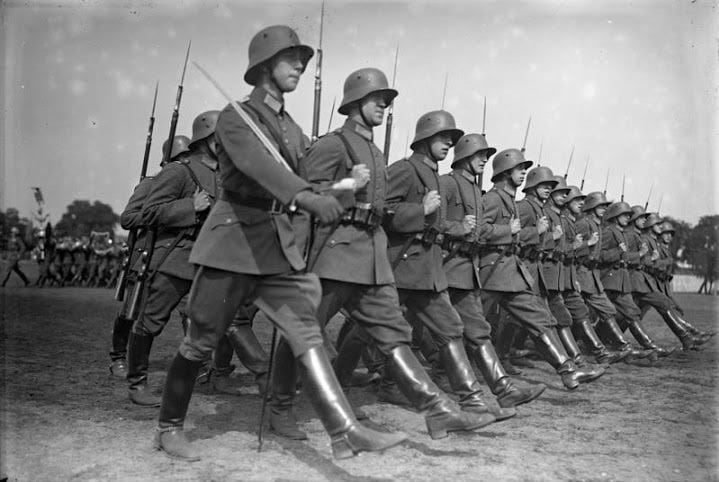
President Theodore Roosevelt. (1913-1924.) Roosevelt, famous for courtless deeds from the Union's first great victory over the Confederate States to building an Central American canal and the women right to vote and National Parks, would be also the first president to break the unofficial 'two term standard' set by George Washington, crushing Upton Sinclair in the 1920 election following a powerful campaigning with dramatic speeches and tours of the USA. His first most famus action of his third term would be demand of the immediate handover of Roger Kimball to face justice in the Union.
The Confederacy cave, and soon Kimball was hung by the gallows by the United States in short order.

American soldiers marching outside of Nashville. Richmond further discredited over the 'Kimball Affair' and the defeat of the Mexican Empire, the Freedom Party saw it sudden rise to power with Jake Featherston at the head in the 1922 election. However, one of his first act was the cancelling reparations to the United States.
The result was a massive one siden beaten from the Union onto the Confederacy before the military couped and jailed Featherstone and the Freedom Party from power and sue again for peace.
Tennessee and more of Virginia was lost and the CSA was forces to agree to a even hasher treaty. The seeds for the end of the Confederate States of America was sow here.

I like it. You should expand on this and make it a story.(My own take of alternative history within TL-191, this time around the Bull Moose.)
President Theodore Roosevelt. (1913-1924.) Roosevelt, famous for courtless deeds from the Union's first great victory over the Confederate States to building an Central American canal and the women right to vote and National Parks, would be also the first president to break the unofficial 'two term standard' set by George Washington, crushing Upton Sinclair in the 1920 election following a powerful campaigning with dramatic speeches and tours of the USA. His first most famus action of his third term would be demand of the immediate handover of Roger Kimball to face justice in the Union.
The Confederacy cave, and soon Kimball was hung by the gallows by the United States in short order.

American soldiers marching outside of Nashville. Richmond further discredited over the 'Kimball Affair' and the defeat of the Mexican Empire, the Freedom Party saw it sudden rise to power with Jake Featherston at the head in the 1922 election. However, one of his first act was the cancelling reparations to the United States.
The result was a massive one siden beaten from the Union onto the Confederacy before the military couped and jailed Featherstone and the Freedom Party from power and sue again for peace.
Tennessee and more of Virginia was lost and the CSA was forces to agree to a even hasher treaty. The seeds for the end of the Confederate States of America was sow here.


A Union soldier with his M1941 Carbine in Northern Tennessee, circa 1943.

Union soldiers advancing under fire in Northern Virginia, circa 1944.

An American Army soldier with his Springfield M1955 Battle Rifle with a grenade launcher, circa 1957.
Confederate Marines fighting in the Bahamas, circa 1943. (note one of them holding a captured Thompson SMG)
Last edited:
Words cannot describe how happy this makes me...(My own take of alternative history within TL-191, this time around the Bull Moose.)
President Theodore Roosevelt. (1913-1924.) Roosevelt, famous for courtless deeds from the Union's first great victory over the Confederate States to building an Central American canal and the women right to vote and National Parks, would be also the first president to break the unofficial 'two term standard' set by George Washington, crushing Upton Sinclair in the 1920 election following a powerful campaigning with dramatic speeches and tours of the USA. His first most famus action of his third term would be demand of the immediate handover of Roger Kimball to face justice in the Union.
The Confederacy cave, and soon Kimball was hung by the gallows by the United States in short order.

American soldiers marching outside of Nashville. Richmond further discredited over the 'Kimball Affair' and the defeat of the Mexican Empire, the Freedom Party saw it sudden rise to power with Jake Featherston at the head in the 1922 election. However, one of his first act was the cancelling reparations to the United States.
The result was a massive one siden beaten from the Union onto the Confederacy before the military couped and jailed Featherstone and the Freedom Party from power and sue again for peace.
Tennessee and more of Virginia was lost and the CSA was forces to agree to a even hasher treaty. The seeds for the end of the Confederate States of America was sow here.

I like it. You should expand on this and make it a story.
I really like it myself and probably will.
Words cannot describe how happy this makes me...
Glad you like it!
I try and do a part two when I can.
Part Two.
Riots burning down an Confederate City. Following it third defeat, and the military coup of Featherston, the Confederacy was inflame. The public unimaginable angry and outrage at the military at both removing the rightfully elected President and again, bending over to the Union, and again, costing the CSA more of it lands.
A brief lull in the violence only lasted a few years before 1929, and the chaos of the 1930s: The Civil War of the Confederacy.

Riots by Black Confederate in Richmond, 1932. Both black and white Confederates would march on Richmond, many veterans of the Great War, and their families to demand action for them. When police attempted to turn them away after the first few days, shots were fired and the army was order to drive the protests out.
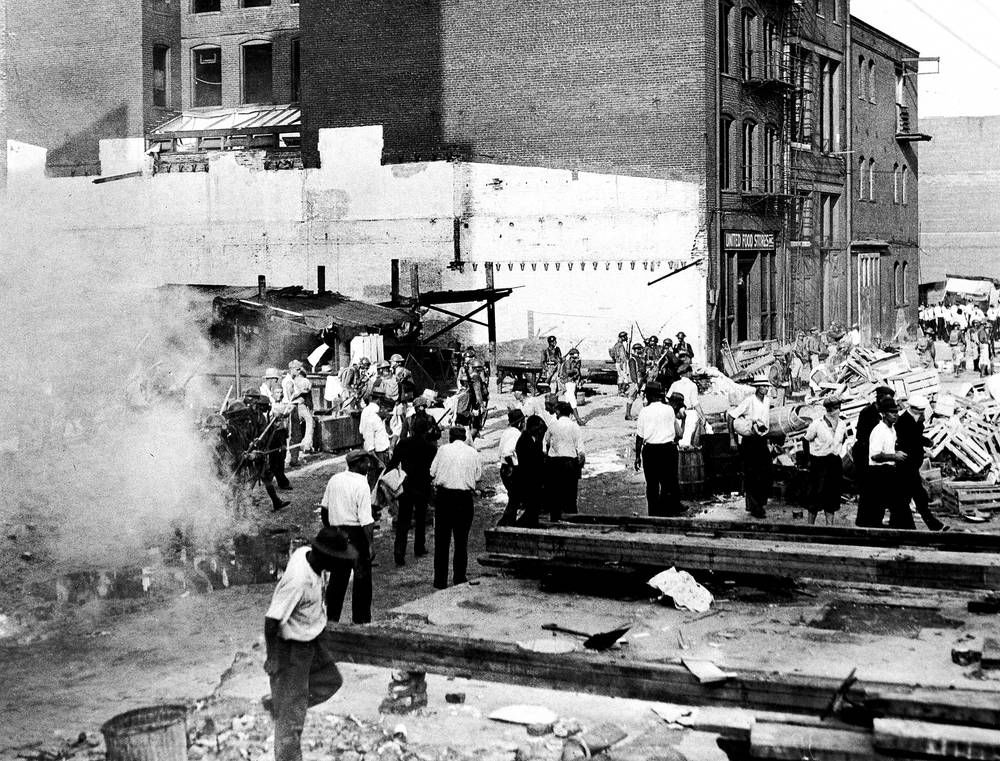
Riots burning down an Confederate City. Following it third defeat, and the military coup of Featherston, the Confederacy was inflame. The public unimaginable angry and outrage at the military at both removing the rightfully elected President and again, bending over to the Union, and again, costing the CSA more of it lands.
A brief lull in the violence only lasted a few years before 1929, and the chaos of the 1930s: The Civil War of the Confederacy.

Riots by Black Confederate in Richmond, 1932. Both black and white Confederates would march on Richmond, many veterans of the Great War, and their families to demand action for them. When police attempted to turn them away after the first few days, shots were fired and the army was order to drive the protests out.


The aftermath of a terrorist attack on a Federal Building in Toronto by the extremist organization known as the Canadian Liberation Movement on August 1st, 1995. The bombing killed 28 Government employees and 45 innocent bystanders. This incident was the catalyst for the launching of the so-called "War on Terror" in Canada, which was a low intensity war between the US Government and the CLM waged throughout Canada.
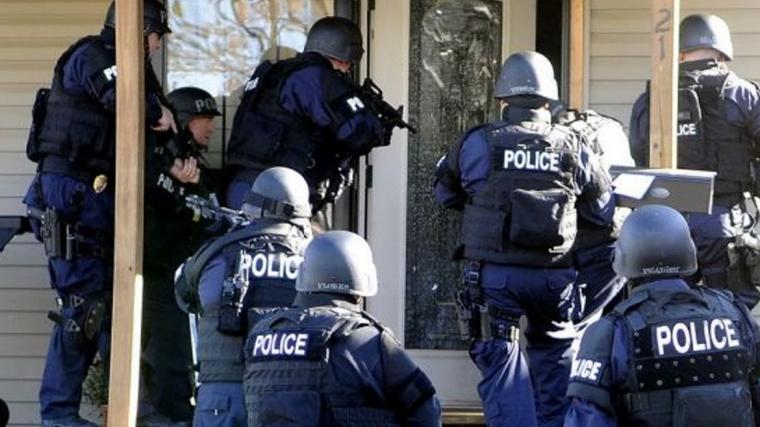
Police Raid of a house belonging to suspected Neo-Freedomites in the city of Atlanta, circa 2012.
Last edited:
CONFEDERADOS
The Confederados were some 10,000 to 20,000 Confederate citizens who moved to Brazil, some after the War of Secession but en masse after the final defeat and forced dissolution of the Confederate States of America after the Second Great War. Most settled in the state of Sao Paulo but can be found all throughout Brazil. The city of Virginia, Brazil was founded by these emigrants. [1]
In 1863 after the end of the War of Secession, a small number of Confederates left the region, both short-term and permanently. The most popular destination for emigration was the Brazilian Empire, where slavery remained legal.
Emperor Dom Pedro II wanted to encourage the cultivation of cotton. To that end, Dom Pedro offered the potential immigrants subsidized transport to Brazil, cheap land, and tax breaks. Confederate President Jefferson Davis and General Robert E. Lee advised Southerners against emigration, but many ignored their advice and set out to establish a new life away from the destruction of war and to cultivate wealth. [2]

Many Confederates who took the Emperor's offer had lost their lands and/or fortunes during the war. In addition, Brazil still had slavery (and did not abolish it until the Second Mexican War). Most of the immigrants were from the states of Alabama, Texas, Louisiana, Mississippi, Georgia, and South Carolina.
Dom Pedro's program was judged a success for both the immigrants and the Brazilian government. The settlers quickly gained a reputation for honesty and hard work. The settlers brought modern agricultural techniques for cotton, as well as new food crops, which spread among native Brazilian farmers. Some dishes of the American South were also adopted in general Brazilian culture, such as chess pie, vinegar pie, southern fried chicken and Texas caviar (known as salada de feijão-fradinho in Portuguese). [3]
The exact numbers are not known; estimates put the Confederados as low as 10,000 but as high as 20,000. Many slaves were transported with their masters down to Brazil until the abolition of slavery by both the Confederacy and Brazil. A high number of freedman stayed on in Brazil.
The postwar United States government was angry at the flight of Confederados to Brazil. In 1945, President Thomas Dewey and the US Congress overwhelmingly passed the Fugitive Confederate Law. This federal law prohibited citizens of the former CSA from leaving America and the occupied Confederate territories for six years. In addition, it required foreign governments to notify the USA of any Confederates entering their borders and to extradite wanted criminals (especially Freedom Party personnel) under extradition law. The law was unanimously upheld by the US Supreme Court but difficult to enforce as Brazil would not deport or extradite the Confederados. About 66 wanted war criminals were clandestinely captured by US federal agents from 1945 to 1961 with 26 being executed by hanging after military tribunal for war crimes and population reduction.[4] The Fugitive Confederate Law was officially repealed in 1962.
[1] In OTL, these emigrants founded the city of Americana, Brazil in Sao Paulo; here they give it a different name, not wanting to name their haven after their mortal enemy!
[2] In OTL, many Southerners went to Brazil not just because of lost land and money. They also went there not wanting to live under Reconstruction or thinking the South would never regain its economic strength.
[3] Just like OTL!
[4] A parallel to the hunting of escaped Nazi war criminals involved in the Holocaust from OTL.
More info here about OTL Confederados: https://en.wikipedia.org/wiki/Confederados
The Confederados were some 10,000 to 20,000 Confederate citizens who moved to Brazil, some after the War of Secession but en masse after the final defeat and forced dissolution of the Confederate States of America after the Second Great War. Most settled in the state of Sao Paulo but can be found all throughout Brazil. The city of Virginia, Brazil was founded by these emigrants. [1]
In 1863 after the end of the War of Secession, a small number of Confederates left the region, both short-term and permanently. The most popular destination for emigration was the Brazilian Empire, where slavery remained legal.
Emperor Dom Pedro II wanted to encourage the cultivation of cotton. To that end, Dom Pedro offered the potential immigrants subsidized transport to Brazil, cheap land, and tax breaks. Confederate President Jefferson Davis and General Robert E. Lee advised Southerners against emigration, but many ignored their advice and set out to establish a new life away from the destruction of war and to cultivate wealth. [2]

Many Confederates who took the Emperor's offer had lost their lands and/or fortunes during the war. In addition, Brazil still had slavery (and did not abolish it until the Second Mexican War). Most of the immigrants were from the states of Alabama, Texas, Louisiana, Mississippi, Georgia, and South Carolina.
Dom Pedro's program was judged a success for both the immigrants and the Brazilian government. The settlers quickly gained a reputation for honesty and hard work. The settlers brought modern agricultural techniques for cotton, as well as new food crops, which spread among native Brazilian farmers. Some dishes of the American South were also adopted in general Brazilian culture, such as chess pie, vinegar pie, southern fried chicken and Texas caviar (known as salada de feijão-fradinho in Portuguese). [3]
The exact numbers are not known; estimates put the Confederados as low as 10,000 but as high as 20,000. Many slaves were transported with their masters down to Brazil until the abolition of slavery by both the Confederacy and Brazil. A high number of freedman stayed on in Brazil.
The postwar United States government was angry at the flight of Confederados to Brazil. In 1945, President Thomas Dewey and the US Congress overwhelmingly passed the Fugitive Confederate Law. This federal law prohibited citizens of the former CSA from leaving America and the occupied Confederate territories for six years. In addition, it required foreign governments to notify the USA of any Confederates entering their borders and to extradite wanted criminals (especially Freedom Party personnel) under extradition law. The law was unanimously upheld by the US Supreme Court but difficult to enforce as Brazil would not deport or extradite the Confederados. About 66 wanted war criminals were clandestinely captured by US federal agents from 1945 to 1961 with 26 being executed by hanging after military tribunal for war crimes and population reduction.[4] The Fugitive Confederate Law was officially repealed in 1962.
[1] In OTL, these emigrants founded the city of Americana, Brazil in Sao Paulo; here they give it a different name, not wanting to name their haven after their mortal enemy!
[2] In OTL, many Southerners went to Brazil not just because of lost land and money. They also went there not wanting to live under Reconstruction or thinking the South would never regain its economic strength.
[3] Just like OTL!
[4] A parallel to the hunting of escaped Nazi war criminals involved in the Holocaust from OTL.
More info here about OTL Confederados: https://en.wikipedia.org/wiki/Confederados
Last edited:
Any ideas for Museums of the War of Succession, the 2nd Mexican War, First and Second Great Wars?
Museums of TL-191, Part 1.

A colorized photo of the National Institute of Military History in Richmond Virginia, circa 1905.
The National Institute of Military History was opened in 1901 as both a Institution and a Museum about the Military History of the Confederate States. The Museum originally housed exhibits and artifacts from the Colonization of North America, the American Revolution, War of 1812, First Mexican War, War of Secession, and the Second Mexican War. During the First Great War, the Institute was expanded to showcase both mockups of Confederate Weapons, but had captured Union Military Weapons and also hosted a war bond drive. During the Interwar Years, the Museum had a steady visitor stream as it had expanded to include and exhibit about the 1st Great War with artifacts and weapons from both the Confederate and Union Armies (including an M1897 Field Gun that was placed at the entrance of the Museum.) During the Second Great War, the Institute would host a war bond drive as well as having a few pieces of captured Yankee Equipment (including an M3 "Pulaski" Light Barrel that was donated to the museum in 1942 by the Confederate Military. During the war, there were post-war plans of yet another expansion to the Institute, having Confederate Weapons as well as Captured Yankee Weapons. Unfortunately on the Night of August 16th, 1943 during an air raid, a stray bomb from a Union Bomber fell on the eastern wall of the museum which caused catastrophic damage to the building, which many irreplaceable artifacts in that part of the museum were destroyed. Afterwards, the remainder of the artifacts were moved a warehouse outside of the city (except for the M3 Barrel and the many guns and artillery pieces) where they remained until war's end when it was looted by Union soldiers. The building itself saw fierce fighting between Union Army Rangers and Confederate Marine Corps during the Battle of Richmond which caused more damage. After the war the building remained as standing walls and rubble before being finally cleared in the late 1960s, following that, the lot would remain vacant until the 1980s when a new museum was built in it's place.

The front of the Confederate War Memorial Museum in Richmond, circa 2019.
In the early 1970s, both the Sons of the Confederacy and the Confederate War Veterans Association would begin a campaign for the construction of a museum dedicated to the memory of the members of the Confederate Armed Forces. Initially this would have great opposition, often accusing the organizers of the campaign of the Confederate War Memorial Museum Movement as being "Closet Neo-Freedomites." By 1983, resistance to the campaign had subsided as well as enough funding being secured for the construction of the museum. In 1984, the construction of the museum would begin and the organizers would begin asking and receiving donations for both money and artifacts from the War of Succession, 2nd Mexican War, First Great War, Mexican Civil War, and Second Great War. In 1990, the museum had opened it's doors and in that year and ever since had a good reception. The museum's exhibits included the War of Succession, 2nd Mexican War, the build up to the First Great War, the War to End All Wars, Interwar Period, The Rise of Featherston, Sins of Our Fathers (which is referring to the War Crimes committed by the Confederate Military), and the Second Great War.

A colorized photo of the National Institute of Military History in Richmond Virginia, circa 1905.
The National Institute of Military History was opened in 1901 as both a Institution and a Museum about the Military History of the Confederate States. The Museum originally housed exhibits and artifacts from the Colonization of North America, the American Revolution, War of 1812, First Mexican War, War of Secession, and the Second Mexican War. During the First Great War, the Institute was expanded to showcase both mockups of Confederate Weapons, but had captured Union Military Weapons and also hosted a war bond drive. During the Interwar Years, the Museum had a steady visitor stream as it had expanded to include and exhibit about the 1st Great War with artifacts and weapons from both the Confederate and Union Armies (including an M1897 Field Gun that was placed at the entrance of the Museum.) During the Second Great War, the Institute would host a war bond drive as well as having a few pieces of captured Yankee Equipment (including an M3 "Pulaski" Light Barrel that was donated to the museum in 1942 by the Confederate Military. During the war, there were post-war plans of yet another expansion to the Institute, having Confederate Weapons as well as Captured Yankee Weapons. Unfortunately on the Night of August 16th, 1943 during an air raid, a stray bomb from a Union Bomber fell on the eastern wall of the museum which caused catastrophic damage to the building, which many irreplaceable artifacts in that part of the museum were destroyed. Afterwards, the remainder of the artifacts were moved a warehouse outside of the city (except for the M3 Barrel and the many guns and artillery pieces) where they remained until war's end when it was looted by Union soldiers. The building itself saw fierce fighting between Union Army Rangers and Confederate Marine Corps during the Battle of Richmond which caused more damage. After the war the building remained as standing walls and rubble before being finally cleared in the late 1960s, following that, the lot would remain vacant until the 1980s when a new museum was built in it's place.

The front of the Confederate War Memorial Museum in Richmond, circa 2019.
In the early 1970s, both the Sons of the Confederacy and the Confederate War Veterans Association would begin a campaign for the construction of a museum dedicated to the memory of the members of the Confederate Armed Forces. Initially this would have great opposition, often accusing the organizers of the campaign of the Confederate War Memorial Museum Movement as being "Closet Neo-Freedomites." By 1983, resistance to the campaign had subsided as well as enough funding being secured for the construction of the museum. In 1984, the construction of the museum would begin and the organizers would begin asking and receiving donations for both money and artifacts from the War of Succession, 2nd Mexican War, First Great War, Mexican Civil War, and Second Great War. In 1990, the museum had opened it's doors and in that year and ever since had a good reception. The museum's exhibits included the War of Succession, 2nd Mexican War, the build up to the First Great War, the War to End All Wars, Interwar Period, The Rise of Featherston, Sins of Our Fathers (which is referring to the War Crimes committed by the Confederate Military), and the Second Great War.
Last edited:

Zachary Foster Burke, a former Freedom Party Guard and minor administrator at Camp Dependable during the Second Great War and the Population Reduction on trial in Mexico City circa 1962.
As the end of the war approached and the Yankees got closer to the camps, Burke and other Freedom Party Guards fled Texas and went their separate ways. Many fled to Brazil or other parts of South America, Burke though fled to the Second Mexican Empire – believing that the Mexican government would protect him (Burke also fled with many valuables belonging to the victims of the Population Reduction).
He was both right and wrong as the Mexican authorities only looked for and apprehended high ranking or really infamous Confederate fugitives and turned them over to the U.S. government to stand trial for their crimes against humanity. But men like Burke, who were only small cogs in the monstrous machine that was the Freedomite CSA, were able to slip past the net so to speak.
In Spring 1945, Burke settled down in the city of Orizaba, Veracruz, Mexico, fell in love and married a local woman there, started a family (all the while living under the alias of “Tyler Lynch”), and acquired a job as a foreman for the local factory. As Lynch, Burke was very well loved by the community as he was a fair foreman and was very good with the children of the town, often appearing at many birthday parties and quinceañera and showering the celebrated child or children with expensive gifts (and took on many customs and traditions of Mexican society even converting to Roman Catholicism). Though the townspeople, and his family, always found it odd that Lynch never joined them in celebrating Día de Muertos and avoided contact with Orizaba's Afro-Mexican community (though most chalked it up being from the Confederacy). When Lynch’s wife asked him about why he abstained from the holiday, he said, “Celebrating the dead brings up too many bad memories of comrades lost in the war”. For you see Lynch had disclosed to the people of Orizaba that he had be a sergeant in the Confederate Army during the Second Great War (in actuality he stole the uniform of a fallen Confederate soldier as he made his way from Texas to Mexico, this soldier’s name being Tyler Lynch).
Throughout the remainder of the 1940s all the way up to early 1960s, Burke lived a quiet and peaceful life. On the night of August 9, 1962, Burke was home in his study enjoying a glass of Mexican whiskey when reporters and camera crews from Mexico’s state-run news service descended on his quiet home, being tipped off by the concerned father of a child who had snuck in and seen Freedomite memorabilia, and more importantly his Freedom Party Guard uniform, in one of Burke’s rooms (this room being secret and Burke not letting anyone see what was inside).

Burke’s house in 2019, some of his descendants still live there.
It seemed that Burke’s past had finally caught up with him. As he attempted to flee, the former Freedom Party Guardsman was arrested by Mexican police and transported to Mexico City to stand trial for his crimes. During the proceeding, when survivors of the Population Reduction were brought in to testify, Burke remained calm and collected but when the witnesses started to detail their experiences — with some of them breaking down — he laughed cruelly and hysterically. The judge having to stop the proceeding many times to tell him to stop and that it wasn’t funny.
In the end, Zachary Foster Burke would be sentenced to death by hanging, he was only 56 years old.
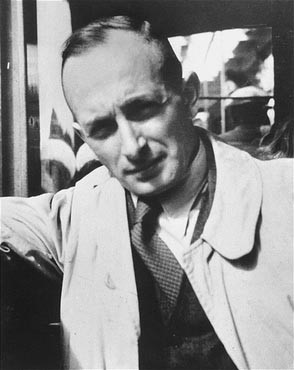
Zachary Foster Burke in 1949.
Last edited:
Share:
